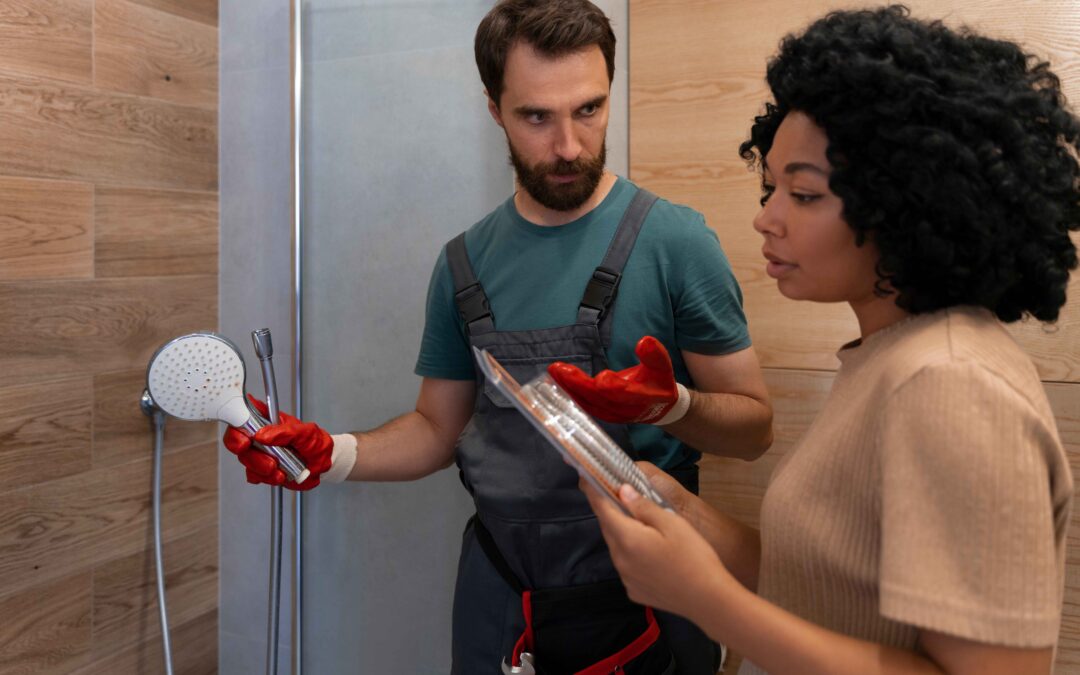Upgrading your shower usually takes 2 to 4 weeks. The time frame varies based on the extent of work involved, material accessibility, and subcontractor coordination. The process encompasses demolition, plumbing adjustments, waterproofing, tiling, and fixture installation. Careful selection of durable, water-resistant materials and stylish, water-efficient fixtures is vital. Efficient installation requires meticulous planning, attention to detail, and compliance with regulations. Consider collaborating with a professional home remodeling company for valuable design, functionality, and longevity insights.
Factors Affecting Project Timeline
Various factors such as the scope of work, availability of materials, and coordination of subcontractors can greatly impact the timeline of a shower upgrade project. The scope of work encompasses tasks like demolition, plumbing adjustments, waterproofing, tiling, and fixture installation. Depending on the complexity of these tasks, the project timeline may vary significantly. Availability of materials is another pivotal factor. Delays in sourcing specific tiles, fixtures, or other materials can halt progress. Planning ahead and ensuring all necessary materials are on-site before commencing work is important to prevent unnecessary delays.
Coordination of subcontractors is also crucial to timely project completion. Different professionals, such as plumbers, tilers, electricians, and carpenters, may be involved in the project. Efficient scheduling and clear communication among these subcontractors are essential to ensure seamless workflow and avoid bottlenecks. Delays in one aspect of the project can ripple effect on the overall timeline. Hence, meticulous planning and coordination are indispensable for a successful and timely shower upgrade project.
Choosing Materials and Fixtures
Factors influencing the timeline of a shower upgrade project, such as the scope of work and subcontractor coordination, play a significant role in determining the selection of materials and fixtures for the renovation. When selecting materials, it is essential to consider the aesthetic appeal, durability, and maintenance requirements. Opting for high-quality materials like ceramic or porcelain tiles for walls and floors can ensure longevity and ease of cleaning. Moreover, choosing fixtures that are both stylish and functional is key. Showerheads with adjustable settings, thermostatic valves for precise temperature control, and water-efficient models can enhance the shower experience while promoting water conservation.
The choice of materials and fixtures should align with the project’s overall design vision and budget constraints. Collaborating with a professional designer or contractor can provide valuable insights into the best options that balance aesthetics, functionality, and cost-effectiveness. Proper planning and research during this phase can lead to a successful shower upgrade that meets practical and aesthetic needs.
Installation Process Overview
How does the installation process for a shower upgrade typically unfold in practice? When upgrading your shower, the installation process is a vital phase that guarantees a successful transformation. Here is an overview of the typical steps involved:
- Demolition: The first step is dismantling the existing shower components, such as the tiles, fixtures, and enclosure. This phase requires careful removal to avoid damage to the foundational structure.
- Preparation: The area must be prepped for the new installation once the old shower is removed. This involves ensuring proper waterproofing, addressing plumbing issues, and creating a level base for the new materials.
- Installation: The final stage involves installing the new shower components, including the tiles, fixtures, doors, and other features. Attention to detail is crucial during this phase to ensure a seamless and functional shower upgrade.
Tips for Efficient Shower Upgrades
To streamline the process and achieve best results, incorporating strategic planning and precise execution are key elements when implementing efficient shower upgrades. Before starting the upgrade, assessing the current shower layout and identifying areas that require improvement is essential. Create a detailed plan outlining the specific upgrades you wish to make, such as replacing the showerhead, installing new fixtures, or retiling the walls.
When selecting materials for the upgrade, opt for high-quality products that are durable and water-resistant to secure longevity. Consider factors such as water efficiency, design aesthetics, and ease of maintenance when choosing new shower components. It is also advisable to consult with a professional plumber or contractor to confirm that the upgrades comply with building codes and regulations.
During the installation process, follow manufacturer instructions carefully to ensure proper assembly and functionality of the new shower elements. Conduct thorough quality checks after completion to address any potential issues promptly. By following these tips and maintaining a systematic approach, you can achieve efficient and successful shower upgrades that enhance both the functionality and aesthetics of your bathroom.
Other related posts:

